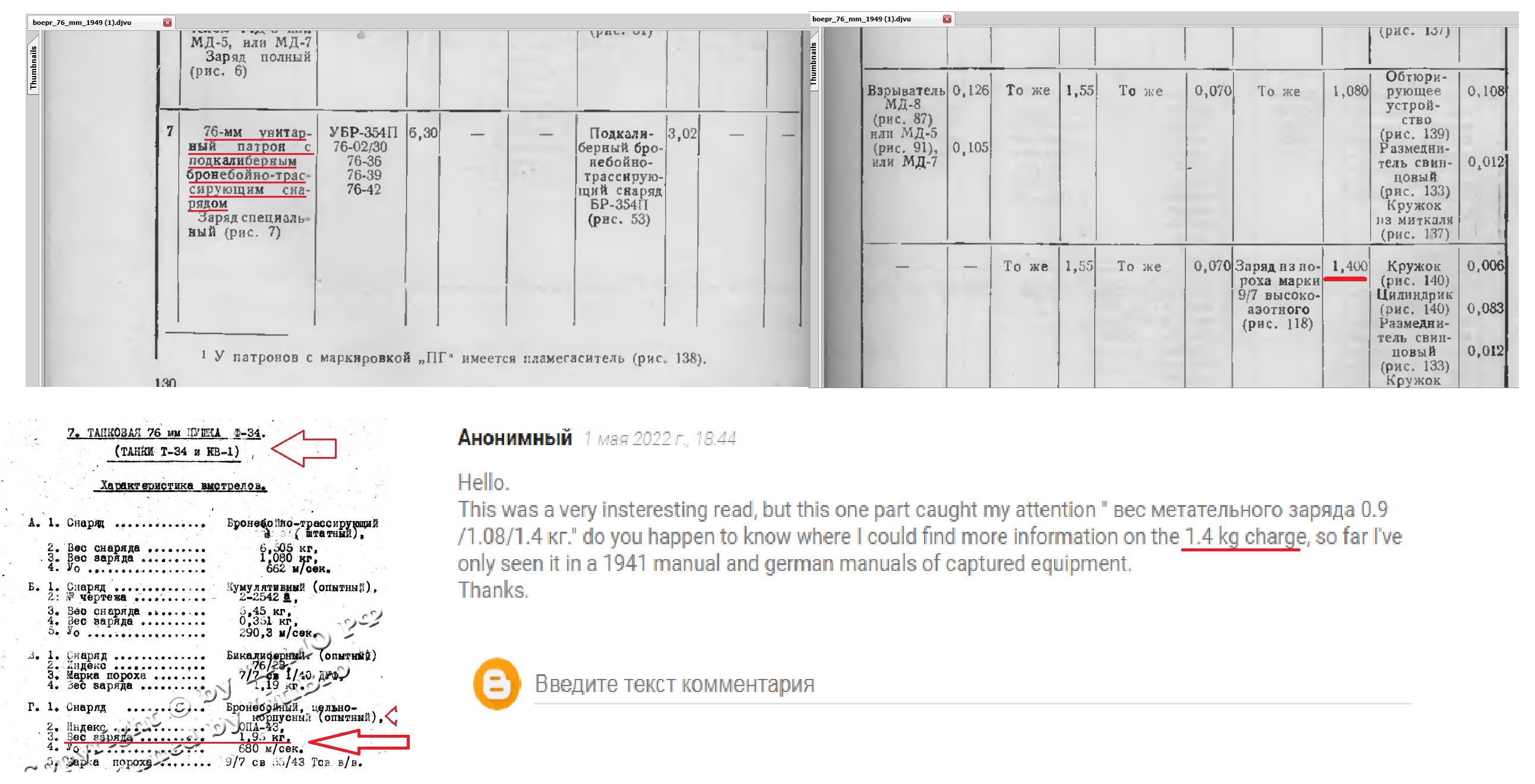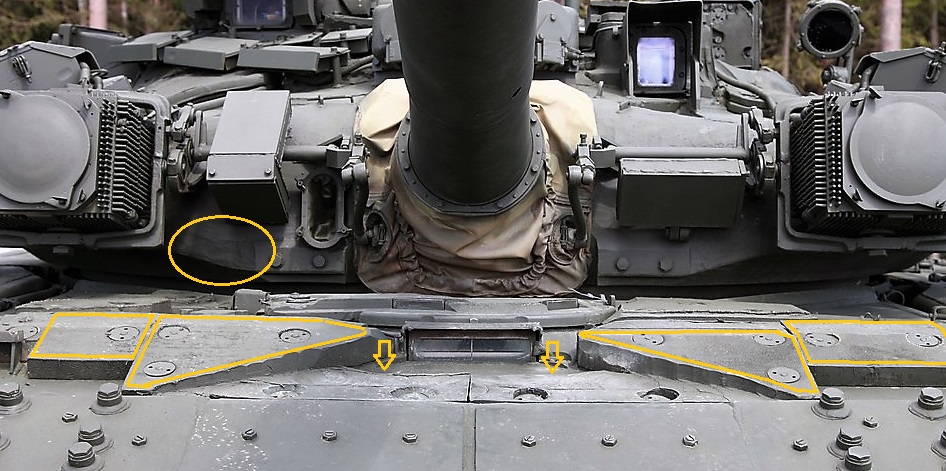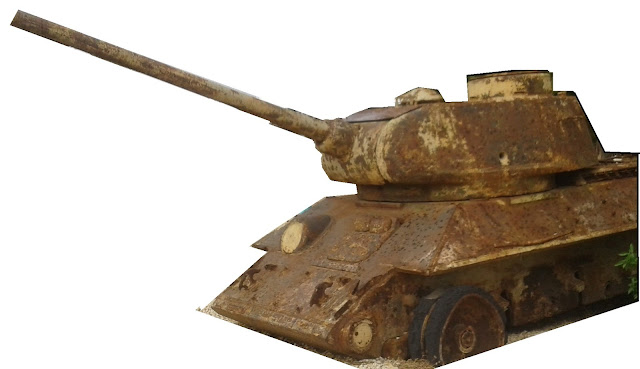Answer the question. UBR-354P for example
Thank you for interest to the real war history. 1.4 kg charge is standard for HVAP ammo. But it's not a limit. As possible to see during fire tests of Pzkpfw VIE armour where used 76 mm experimental ammo for F34 tank gun with charge 1.9 kg. Traditional propaganda solution: enough to show that F34 projectile is able to penetrate German Tiger armour, nobody in USSR will check it's charge parameter.




Thank you for replying.
ОтветитьУдалитьI am aware and have seen other sources indicate that the F-34 had a different velocity like in here https://sovetarmy.forum2x2.ru/t778-topic (the charge listed is 1,030)
The special charge I was trying to find info on was used on the model 1939, 1902/30 L40 & ZiS-3.
German manual:
http://michaelhiske.de/Wehrmacht/Heer/HEER/HDv_119/116/Deckbl.htm
This manual describes the gunpowder as being the same type used in the 76mm anti-air gun model 1931/1938.
And this is the russian manual:
https://reibert.info/attachments/img107-jpg.910469/
The penetration figures in the german manual are the exact same as in the russian manual, so it's safe to assume they were copied from it or maybe another manual (a firing table?).
My regards.
I almost forgot. The manual you posted a picture of says the gunpowder is a different type from that used in the Anti-Air gun.
ОтветитьУдалитьhttps://reibert.info/attachments/boepit-na-1946-god-jpg.16442286/
The charge in here used in the AA gun is the exact same as in the "Special" charge.
Cheers.
Charge used by 76,2 mm AA gun 3-k was 1.82 kg( according to Shirokorad). Name of the russian manual is "Material part of ground artillery". It's hard to say what gun parameters were taken for this table without clear description. Don't forget, that Red Army in that period had not only different propellent charge in ammo, but different barrel length too(30 calibers-F32, 41 calibers-F34 and 51 calibers-F22). That's why it's almost impossible to say where and how were accepted results of velocity and armour penetration. Usual for RKKA practice was calculation only. Also, take a look on the distance of fire. Accuracy of the soviet artillery wasn't allow to get the target of the tank size at the distance of 2-3 km. This is the main problem of the soviet resources: you can't trust them! Germans( especially in the beginning of the war) used soviet manuals data but it was obsolete practice . Soviet armour and artillery were even worse than Germans thought.
ОтветитьУдалитьRegards
Thank you for the information.
ОтветитьУдалитьI have found another manual from 1942, and it does say that the charge was 1.82 kg; also a snippet of a firing table which also says 1.82 kg.
Maybe the quality of the gunpowder got better after the war ( the manual that says 1.4 kg was from 1946).
The 1.8kg figure is closer to the F-34 special trials charge, but it doesn't explain the german markings on their documents.
My regards.
I have another version. https://t34inform.ru/doc/1940-10-16_ANIOP_T-34_L-11.html -here you can find that different between normal (1.108 kg) and forced( 1.150 kg) charge is around 50 grams. You are talking about 400 grams between charge 1.8-1.9 and 1.4 kg. On another page of the same site you can find that test charge of 57 mm tank gun was chosen equal to 1.35kg +.018 kg+.047 kg. "Подобранный АНИОПом заряд весом 1,355 кг пороха марки 12,7св 5/3Ш при флегматизаторе весом 47 гр. и свинцовом размеднителе весом 18 гр. дал следующие данные" https://t34inform.ru/doc/1941-05-19_JAK-0017.html It was in 1941. It looks very close to our HVAP charge.
Удалить